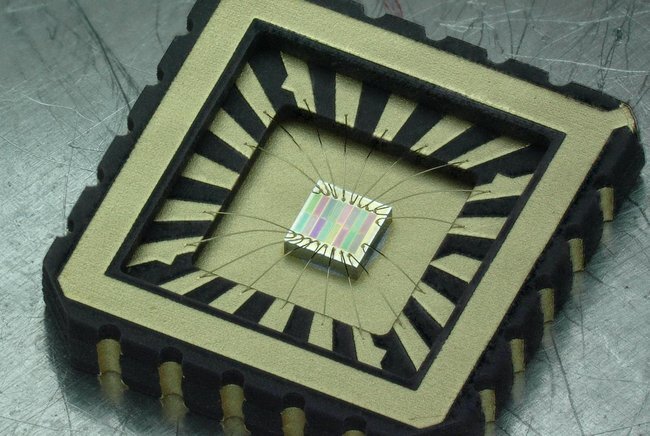New tiny sensor makes the invisible visible
 New tiny sensor makes the invisible visibleA TU/e research group has developed a new near-infrared sensor that is easy to make, comparable in size to sensors in smartphones, and ready for immediate use in industrial process monitoring and agriculture. This breakthrough has just been published in Nature Communications, with co-first author Kaylee Hakkel defending her Ph.D. thesis on January 14th.
New tiny sensor makes the invisible visibleA TU/e research group has developed a new near-infrared sensor that is easy to make, comparable in size to sensors in smartphones, and ready for immediate use in industrial process monitoring and agriculture. This breakthrough has just been published in Nature Communications, with co-first author Kaylee Hakkel defending her Ph.D. thesis on January 14th.
The human eye is a marvelous sensor. Using three photoreceptor cells that convert visible light into signals for different colors, the eye gives essential information about the world around us.
"When our brain puts the signals together, it makes a prediction of what the signals mean based on our experiences. For example, a red strawberry is sweet, but a green one is not," explains Kaylee Hakkel, Ph.D. researcher in the Photonics and Semiconductor Nanophysics group at the department of Applied Physics and co-first author of the study.
Size does matter
While the human eye is impressive, it's far from being the most advanced natural light sensor out there. "The eyes of the Mantis shrimp have 16 different cells, which are sensitive to ultraviolet light, visible, and near-infrared (NIR) light," says Hakkel. "And measuring the spectrum in the infrared is most interesting for applications in industry and agriculture, but there's one major issue—current near-infrared spectrometers are just too big and expensive."
Hakkel and her collaborators have solved this issue by developing a near-infrared sensor that fits onto a small chip. And just like the eye of the Mantis shrimp, it's got 16 different sensors—but they are all sensitive in the near-infrared. "Miniaturization of the sensors while keeping costs low was a major challenge. So, we designed a new wafer-scale fabrication process to achieve this."
https://www.civilengineering.ai/new-tiny-sensor-makes-the-invisible-visible/

Post a Comment